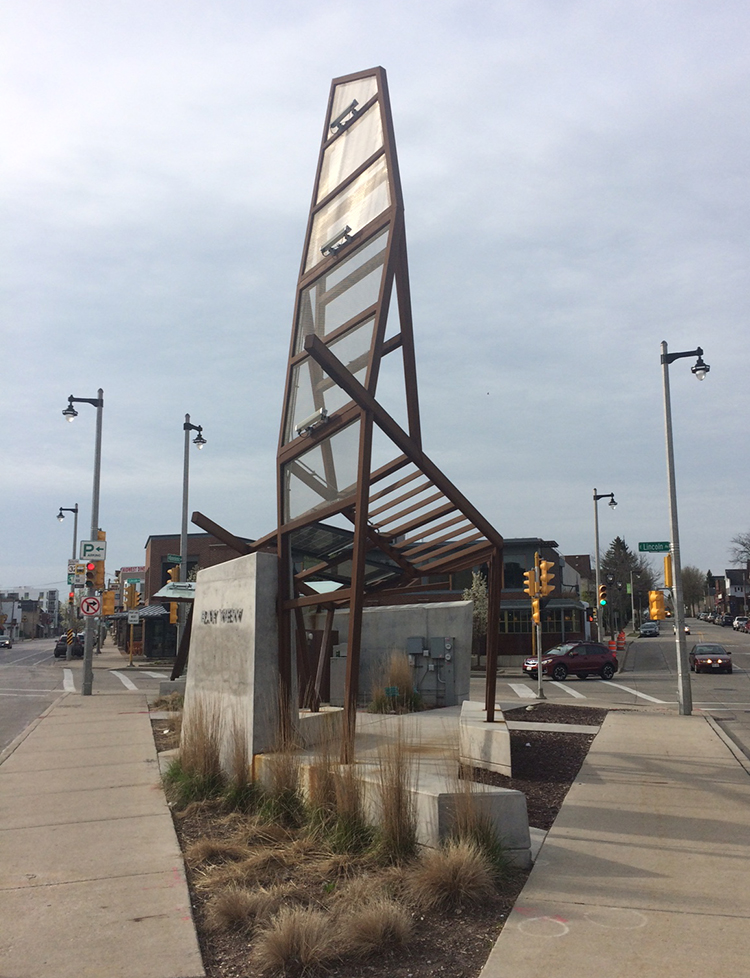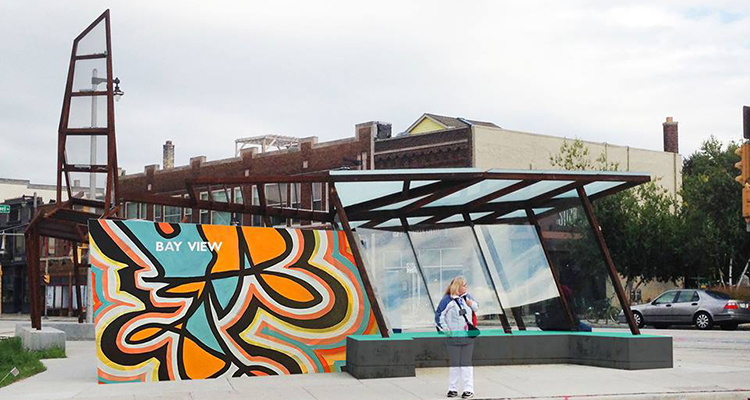Since coming into existence on the high-traffic intersection of Kinnickinnic, Howell, and Lincoln avenues in late 2014, Bay View’s “Art Stop” has been a source of considerable criticism. The piece designed by Román Montoto—which is actually called “Urban Counter-Pose”—cost approximately $200,000, took three years of combined planning and construction, and left one of Milwaukee’s most heavily-traveled causeways with an assemblage of concrete and rusted steel that’s expressed identity as a bus stop is up for debate.
Art critic Mary Louise Schumacher called the stop “a classic postmodern misadventure” and said the task force-selected design offered the “atmosphere of an outdoor utility closet.” Bay View Compass columnist Jeffrey Zimmerman called Art Stop “more of a large sculpture and less a piece of functioning, organic architecture” and claimed its design “seems to display a disregard for, if not implicit sadism towards, those transit riders.” Urban Milwaukee contributor Tom Bamberger called it “neither art nor a bus stop” and took issue with the 32-foot-tall steel tower’s cost, lack of seating, and shelter that’s limited to a six- by 12-foot area.
Recently, the public art installation that has elicited scrutiny from Milwaukee’s arts community has been a source of criticism from the public itself. Last month, a portion of the Art Stop’s prominent Lincoln Avenue-facing concrete wall was spray painted with graffiti. Earlier this month, the metallic E on the “Bay View” lettering was removed. In light of the vandalism on the cold, industrial design that’s been likened to “a scene in Inception,” Milwaukee painter and muralist Jeff Redmon is trying to convince Bay View’s powers at be to let him improve the Art Stop with the addition of, well, art.
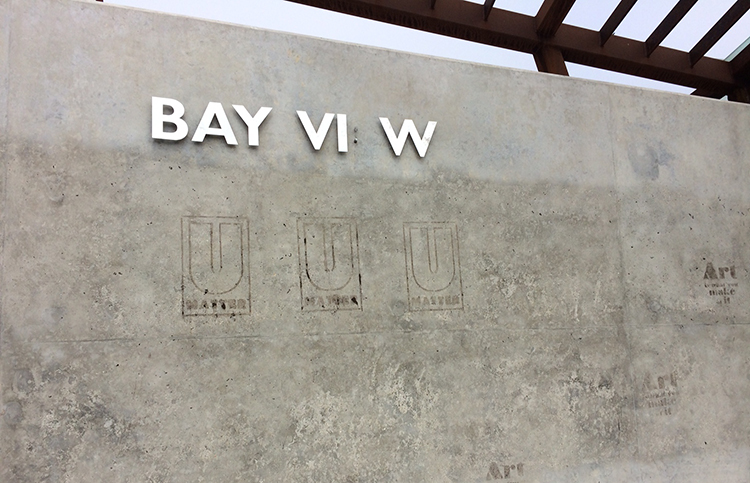
“I’ve been chirping at the KK BID for a while about doing art projects in the neighborhood,” Redmon says. “I saw that [the Art Stop] got tagged and it just finally pushed me over the edge to where I wanted to do something with it.”
Redmon—Artist in Residence at RedLine Milwaukee, a co-organizer of Arte Para Todos and Bay View Gallery Night, as well as a Bay View resident since 2009—met with members of the Kinnickinnic Business Improvement District at the beginning of April to discuss the possibility of curating a mural project in which a new artist would be commissioned to paint the Art Stop’s concrete façade every six months. He said he’d volunteer to paint the first mural (and provided samples of possible designs), and he asked that $1,000 be given to each muralist, in addition to compensation to cover supply costs.

Photo illustration: Jeff Redmon
“I’m a big believer in public art. It helps people and does good things for people, both creatively and psychologically. It just lifts people up,” Redmon says. “Right now, it looks like some weird, rusty soviet wreckage. But it’s a great spot. It’s a super prominent wall, but it’s just a plain gray wall, so why not put art on it?”
Luke Chappelle is on Redmon’s shortlist of artists he’d like to paint the Art Stop. The longtime Bay View resident and regular MCTS passenger painted an avian mural in the back room of Blackbird Bar on Kinnickinnic Ave., and he recently had an exhibition at Tonic Tavern. Chappelle points to the “muted” design as a possible reason the recent rash of Art Stop graffiti.
“Having blank canvas like that is inviting someone to vandalize it,” Chappelle says. “I don’t want to look at the two-second scrawls of tags and shit. Even if I don’t like the painting, it’s got to be better than concrete and shitty tags. And if [the mural] changes, that’s great, too.”
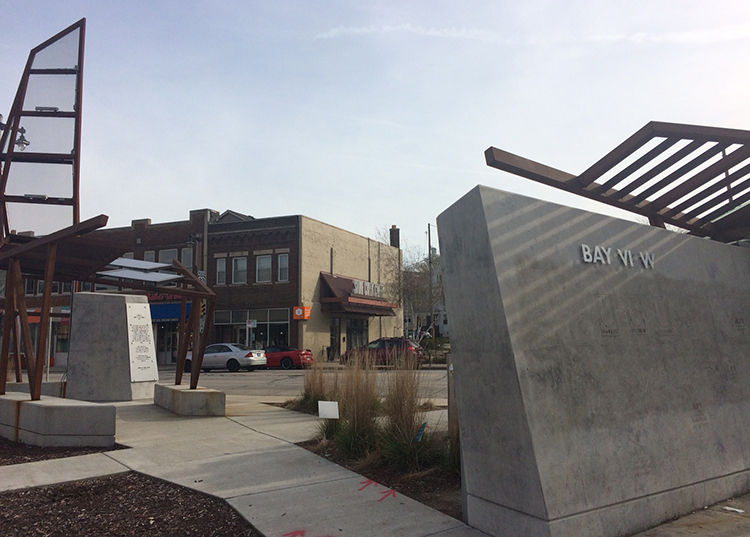
Though the KK BID was instrumental in the Art Stop’s development, Redmon was told they cannot make changes without first alerting Montoto. Redmon met with BID members Toni Spott and Mary Ellen O’Donnell, both of whom declined to be interviewed at this time. O’Donnell offered an explanation of the modification process via email.
“As I explained to Jeff, there are a few hurdles to get over before the KK BID can even consider an Art Stop project; the first of which is to secure the architect’s approval to modify the structure, a provision of his contract with the city,” O’Donnell wrote.
All attempts to reach Montoto were unsuccessful at the time this article was written. When reached for comment, 14th District alderman Tony Zielinski said Redmon’s proposed mural project was a “very intriguing idea,” while also noting KK BID was in control of the Art Stop.
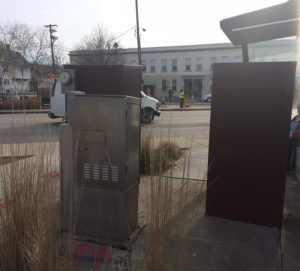 Though “Urban Counter-Pose” is attributed to Montoto, the artist’s original vision was subjected to changes along the way. Design elements were removed and modified, and proposed trees were stricken from the plan—leaving junction boxes exposed and the so-called bus shelter with very limited coverage, and no seating except concrete slabs. At the end of the process, both the artistic merit and the functionality of the Art Stop were called into question.
Though “Urban Counter-Pose” is attributed to Montoto, the artist’s original vision was subjected to changes along the way. Design elements were removed and modified, and proposed trees were stricken from the plan—leaving junction boxes exposed and the so-called bus shelter with very limited coverage, and no seating except concrete slabs. At the end of the process, both the artistic merit and the functionality of the Art Stop were called into question.
“This is what happens when art is decided by committee. People tend to agree on the lowest common denominator,” Chappelle says. “Art isn’t made by committee. The fact that it isn’t very functional as a bus stop adds another kick in the teeth for people that have to use the bus. ‘I’m getting rained on because of this piece of art.'”
If permitted by both Montoto and the KK BID to curate an Art Stop mural project, Redmon hopes artists he’d appoint to transform the space would also try to address some of the apparent utility issues. He also mentioned the possibility of making the stop a Wi-Fi hotspot.
“I would like to try to help out with some of the functionality of it, too—the surfaces you sit on or putting an ashtray there,” Redmon says. “Originally, they were supposed to cover up the electrical boxes. Maybe we can integrate art into that and basically make them disappear.”
Bay View is changing. Sweet Water Organics, where Redmon had various murals on both the interior and exterior walls, has been razed to make room for a luxury apartment complex. More are on the way. Though his work was destroyed, he’s not bitter.
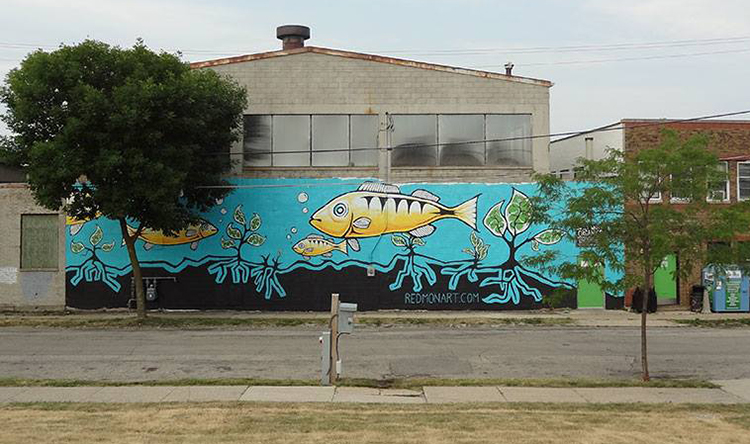
“It’s just the reality. Murals are not permanent by any means. If you’re doing street art, it can be gone tomorrow, then you just go do something else,” Redmon says.
Redmon isn’t combating change in Bay View. Rather than fighting against the currents of staggering neighborhood development, the artist is striving to accent public art in a way that adds a dash of impermanent personal identity to one of Milwaukee’s busiest intersections.
In Zimmerman’s 2014 Bay View Compass column, Montoto is quoted. The architect calls his controversial piece of public art “open-ended and optimistic for the future.” Much like the neighborhood where the polarizing landmark sits, Art Stop is a blank canvas with plenty of room for improvement.
